Categories: Electrical Reviews
Number of views: 22876
Comments on the article: 3
12 volt photo relay with Aliexpress
A photorelay is a useful automation device that allows you to automatically control the light depending on external lighting.
The device arrived hermetically sealed in an antistatic.

It is a small neat board. All connections on terminal blocks.

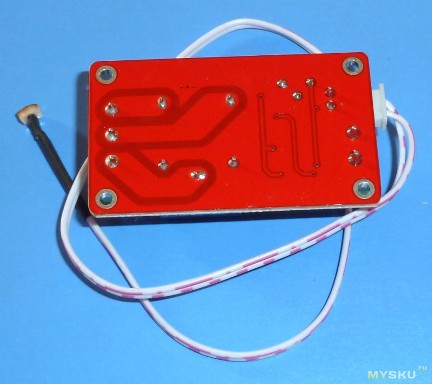
The installation is excellent, the board is washed. Light sensor (photoresistor) on the connector, wire length 30cm.
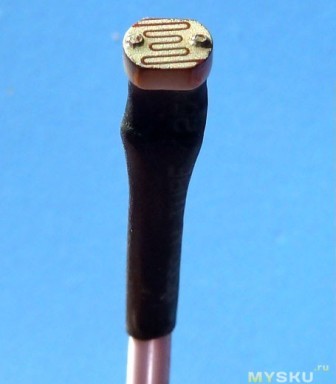
The supply voltage is 12V, the current consumption when the relay is off is 3.75mA, when it is on, it is 36mA.
There is protection against reverse polarity of the power supply (diode).
The power supply is indicated by a red LED, when the relay is activated, the blue LED lights up. A tuning resistor adjusts the sensitivity of the photo relay. When the illumination decreases below the threshold, the relay is activated. The sensitivity adjustment range is wide enough.
The circuit is a simple dual analog device comparator LM2903 (variety operational amplifier).
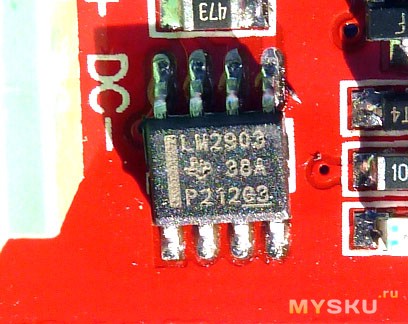
Switching relay with changeover contact.

I would not count on the declared 10A and it is better not to load it over 5A.
Real photo relay circuit:
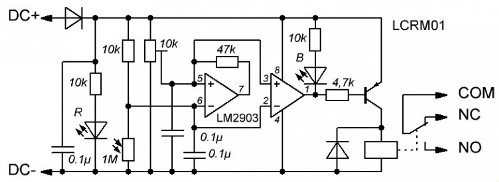
The Chinese habitually burn with circuits.
1. Ripples and impulse noise in the power supply cause false alarms near the switching point.
2. Connect both comparators in parallel at the inputs - this has yet to be thought out (I have never met this before). One comparator controls the relay, the other provides switching hysteresis. This cannot be done for one simple reason - even between the comparators there is always a spread of parameters between the comparators, which causes them to not work simultaneously when the input signal changes slowly.
3. The hysteresis comparator does not have a pull-up of the power supply (the output is with an open collector!), Which leads to the disappearance of hysteresis in the trimmer state near the extreme positions, and accordingly to the bounce of the photo relay contacts.
If necessary, problem 1 can be solved by adding a 100μF / 25V capacitor for power supply after the diode.
Problems 2 and 3 are most easily solved by a small alteration of the circuit - to remove the 47kΩ resistor and solder the 100kΩ resistor from the back of the board according to the circuit.
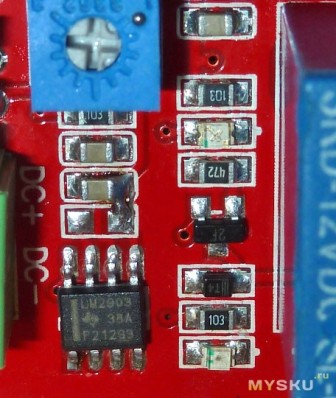
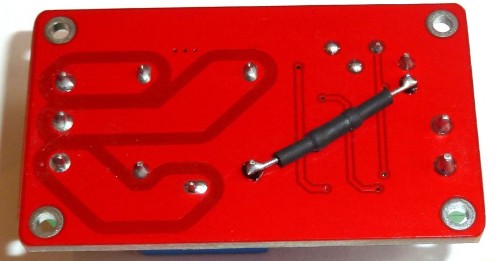
After the alteration, only one comparator functionally works, which is more correct. The relay works clearly in any position of the trimmer.
If necessary, by selecting the resistance of the resistor 100k, you can change the value of the hysteresis of switching the photo relay. If you go even further, you can add an adjustable delay to turn off the relay (sometimes it is very useful, for example, in a car to automatically control the dimensions or headlights).

In this scheme, an adjustable photocell shutdown delay occurs for a period of about 1 second to 4 minutes. Dear Chinese friends, please complete the device and add a shutdown delay :)
See also at bgv.electricianexp.com
:
